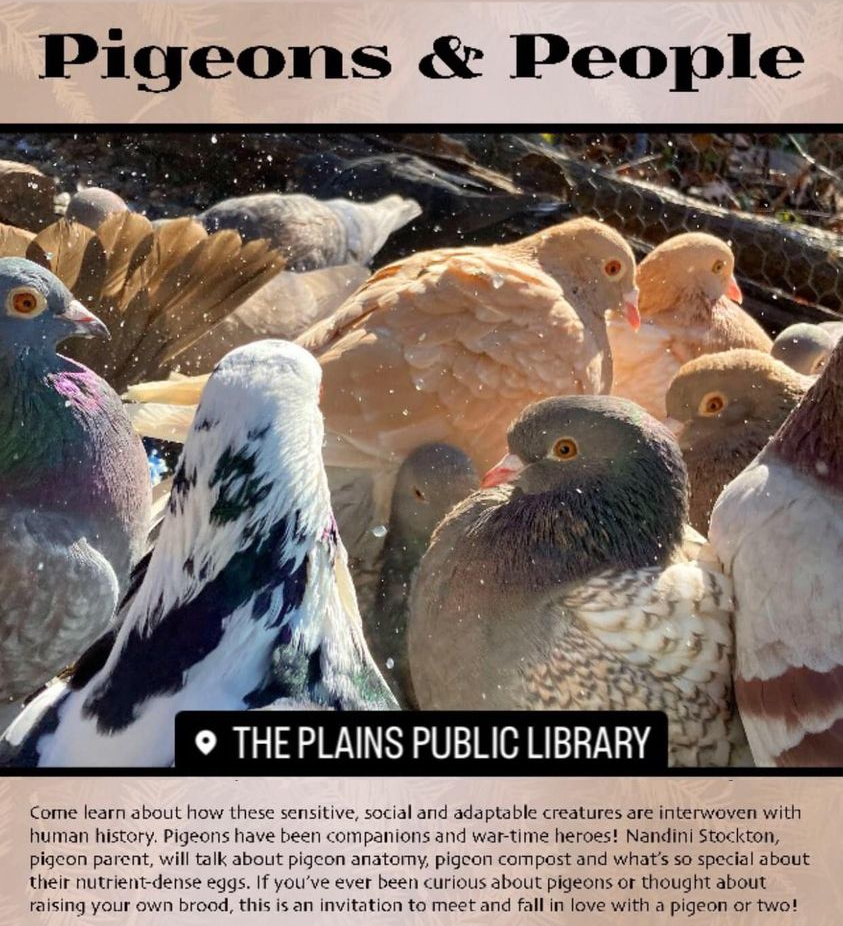
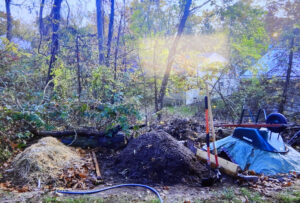 When I saw the above teaser of a library program, I was instantly hooked by the reference to pigeon compost. And the photo Nandini Stockton shared of her manure piles was definitely intriguing. But are the feed costs and work worth the output?
When I saw the above teaser of a library program, I was instantly hooked by the reference to pigeon compost. And the photo Nandini Stockton shared of her manure piles was definitely intriguing. But are the feed costs and work worth the output?
To answer that question, I had to listen to the entire (wonderful presentation), the cream of which I’m including below.
Eating pigeon eggs
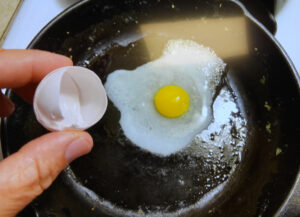 In addition to manure, pigeons on the homestead are a source of what Nandini referred to as a superfood. Despite their diminutive size, she claimed each pigeon egg contains as many calories as a chicken egg. I couldn’t fact-check this easily on the internet, but did find an article mentioning pigeon eggs’ protein levels, which are higher ounce-per-ounce than chicken eggs.
In addition to manure, pigeons on the homestead are a source of what Nandini referred to as a superfood. Despite their diminutive size, she claimed each pigeon egg contains as many calories as a chicken egg. I couldn’t fact-check this easily on the internet, but did find an article mentioning pigeon eggs’ protein levels, which are higher ounce-per-ounce than chicken eggs.
The downside of raising pigeons for eggs is volume, and not just volume of individual eggs either. Unlike chickens, you can’t keep ten female pigeons with no males around and expect eggs, and they don’t lay every day either. Instead, you need a mated pair of pigeons and each pair only produces four eggs per month. No wonder pigeon eggs are considered a high-dollar delicacy!
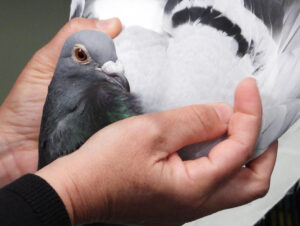 Raising pigeons for meat
Raising pigeons for meat
The other homestead use for pigeons is meat. Nandini didn’t talk about this much since she clearly considers her pigeons pets. But she did mention that there are specific varieties of pigeons better suited to being used as meat birds. Squabs are often killed at thirty days, right around the time they fledge.
Keeping pigeons on the homestead
So what kind of infrastructure do you need to keep pigeons? The coop (better known as a loft) is a bit like a chicken coop and it usually has at least a small aviary attached. Wood pellets are optimal bedding and pigeons are fed a mixture of grains. They also need special 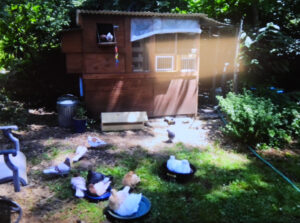 waterers with reservoirs at least 3/4 of an inch deep (but which the pigeons can’t poop in, of course).
waterers with reservoirs at least 3/4 of an inch deep (but which the pigeons can’t poop in, of course).
Nandini keeps her pigeons entirely cooped up from early September to mid April since, otherwise, Cooper’s Hawks chow down on her flock far too easily. Starting in April (or whenever leaves are back on the trees to provide cover), she lets her pigeons out in the mid afternoon. They fly around, forage, and bathe in basins of water she places on the lawn before returning inside for the night.
I asked whether free-flying pigeons bother her garden, and she said they didn’t. But she also noted that her loft is located on the opposite side of her yard from her vegetables. She does plant sedums for her flock closer to their loft, which likely keeps them close to home.
Are we getting pigeons?
Mark says no. After sleeping on it, I decided he was right — an extra worm bin would result in just as good compost at a fraction of the hassle. But if you end up getting pigeons (or already have a flock), I hope you’ll comment and let me know what you think of them as homestead livestock!
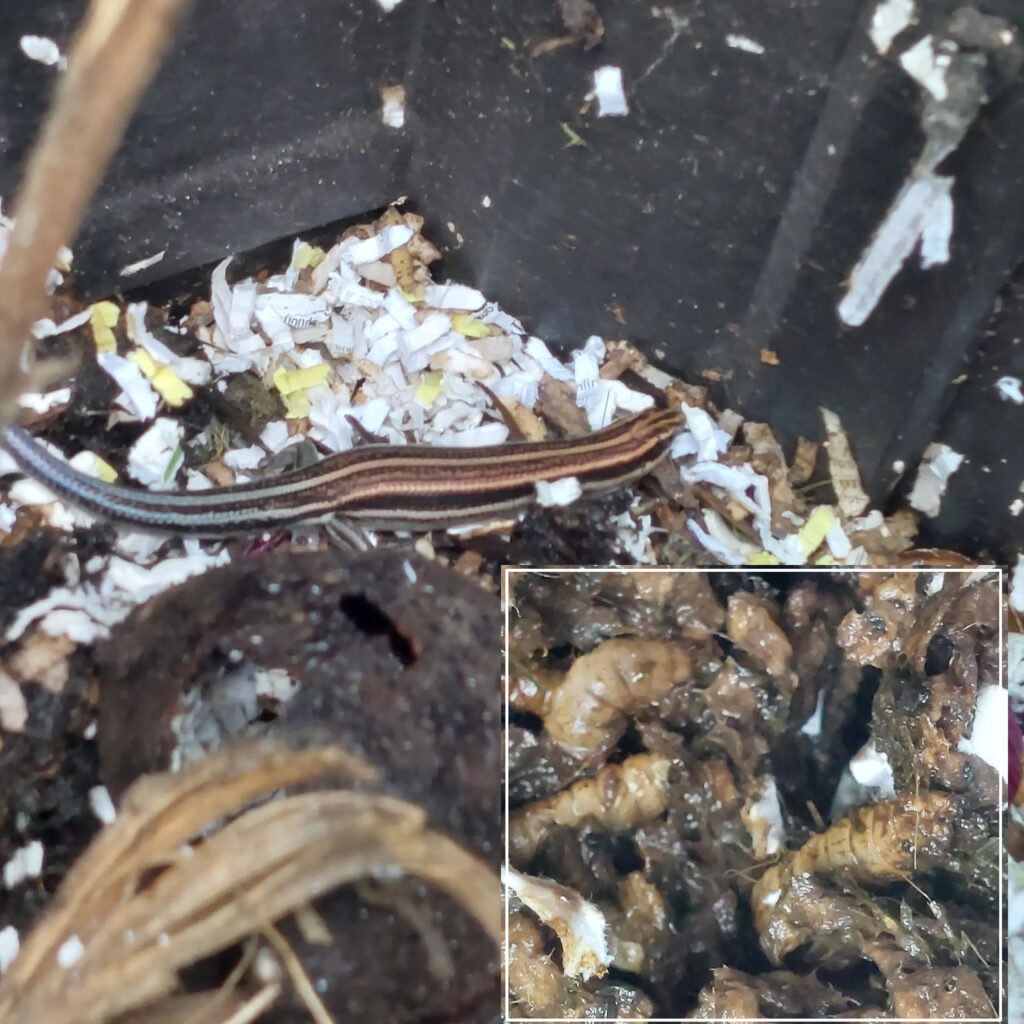
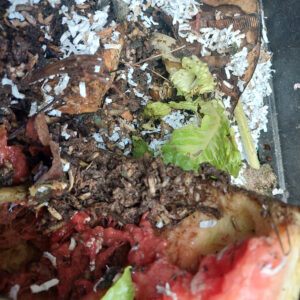 My favorite thing about black soldier flies is the way they turn kitchen scraps into worm-casting-quality black gold at lightning speed. Mark loves the way his pets greet him with their roiling excitement whenever he makes a compost deposit. Chicken keepers love black soldier flies for the high quality protein they offer as a feed addition. And your skinks are clearly in the chickens’ camp!
My favorite thing about black soldier flies is the way they turn kitchen scraps into worm-casting-quality black gold at lightning speed. Mark loves the way his pets greet him with their roiling excitement whenever he makes a compost deposit. Chicken keepers love black soldier flies for the high quality protein they offer as a feed addition. And your skinks are clearly in the chickens’ camp!